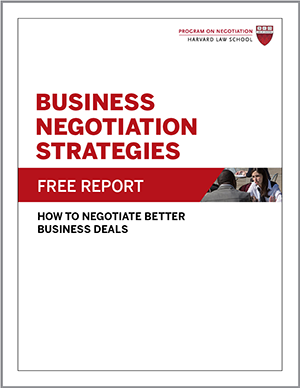
How can negotiators overcome impasse and achieve win-win negotiated agreements at the bargaining table? This business negotiation case study illustrates the power of expanding the focus of the negotiations by looking for tradeoffs.
The Shutdown
It all began during the early hours of January 6, 2012: the National Hockey League (NHL) and the NHL Players’ Association (NHLPA) announced they had reached agreement to end a 113-day lockout. The players returned to the ice for a shortened 2012-2013 season on January 19 (see also, How Mediation Can Help Resolve Pro Sports Disputes).
Back in July 2012, the NHL opened negotiations for a new collective-bargaining agreement with an aggressive proposal to reduce players’ percentage of hockey-related revenue from 57% to 43%, among other demands. After waiting a month, the NHLPA put forth an offer that separated player salaries from league revenue, slowing the growth of player salaries, and dividing revenues saved among financially struggling teams.
League Lockout and Shuttle Diplomacy
The league lockout came after the September 15, 2012 expiration date of the parties’ existing contract came and went. Weeks of cancelled games turned into months.
A breakthrough came when federal mediator Scot L. Beckenbaugh entered the picture, according to USA Today. When face-to-face negotiations got heated, Beckenbaugh separated the two sides and engaged in shuttle diplomacy, visiting each side in turn to identify issues where they were willing to be flexible (see also, Negotiating the Impossible).
The final deal hinged on the issue of player pensions. The agreement allowed NHL players, whose careers are often short, to concede on the short-term issue of salary in return for peace of mind regarding their long-term financial future.
Achieving Win-Win Agreements in Business Negotiation
The deal suggests a valuable way for business negotiators in all realms to break through thorny disputes: expand your focus by looking for tradeoffs that cut across time periods. Specifically, consider offering a long-term gain for the other side in return for a short-term concession that you value highly. By looking beyond the immediate future, you may be able to identify new sources of leverage—and resolve your dispute.
What business negotiation lessons do you think can be learned from the NHL?
Related Article: Conflict Off the Rink: The NHL Negotiations
Conflict Management: Becoming a Team Player
These Examples Illustrate the Importance of Negotiation in Business





